What Is House Interior Design and Why Does It Matter
When others discuss house interior design, they tend to dream up sleek showrooms and magazine-perfect living rooms. But truthfully, it’s all about defining the way you live your everyday — where your coffee goes down better, wherever you unwind, and wherever your morning routine goes smoothly without a struggle. Good interior design mixes style with substance so your house looks fantastic and actually makes your life simpler.
Why bother? Because a well-conceptualised home saves time, reduces stress, and, yes, boosts the resale value. Interior design is a bit like a good map: it gets you from point A (wake up) to point B (coffee, work, play) with fewer detours.
Basic Rules for Great House Interior Design
Designing makes you feel as though magic occurs when the fundamentals are right. These are the underlying rules you’ll continually revisit.
Balance: Weight and Visual Harmony
Balance is how your eye moves through a room. Symmetry (matching sofas facing each other) feels formal and calm. Asymmetry (a sofa opposite a statement chair + art) feels dynamic and lived-in. Both work — pick the mood you want.
Scale & Proportion: Right-Sized Decisions
A piece of furniture that’s too big or too small upsets the equilibrium. A teeny-tiny coffee table and a colossal sectional? Strange. A huge dinner table for a teeny-tiny kitchen? Awkward. Measure first. Consider the space as a sentence: every piece of furniture is a word — balance them so the sentence makes sense.
Colour: Creating the Mood
Colour is an emotional shortcut. Neutrals brighten up and open up spaces; muted blues calm down; warm terracottas rev up. Primary palette for big spaces (walls, floors), secondary palette for furnishings, accent colours for accessories.
Lighting: See — and Feel — the Difference
Lighting is not merely about bulbs. There’s ambient lighting for general illumination, task lighting for reading and cooking, and accent lighting for emphasising art or architecture. Dimmers are your buddy — they allow you to determine the mood.
Texture & Materials: Layering for Depth
Smooth and rough = intriguing. Combining materials — wood, metal, glass, upholstery — adds richness. Even a neutrality-minded room uses texture as a means of providing warmth and evading a one-dimensional space.
A Step-by-Step House Interior Designing Procedure
Need a straightforward outline? Here are the steps.
Step 1 — Evaluate Needs & Lifestyle
Inquire: Who uses it? How many? Do you work from home? Do you entertain? A family with children requires sturdy surface and concealed storage; a solo pro may value looks and a dramatic entry.
Step 2 — Develop a Realistic Budget
Design does not have to cost a fortune. Allocate your budget: 40% for large purchases (sofa, bed), 30% for built-ins or remodel, 20% for lighting and rugs, 10% for accessories. Tweak by need: if you entertain every night, overweight the living room.
Step 3 — Select Your Style (and Don’t Freak Out)
Do not dictate one “style” unless you love it. Mix — modern sofa with a vintage side table, Scandinavian lighting with bohemian rugs. Styles are rules of thumb, not commandments.
Step 4 — Moodboard & Colour Scheme Construction
Gather images (Pinterest, magazines) and develop a palette. A moodboard ensures your taste and prevents impulse purchases. Apply 60/30/10 colour rule: 60% leading, 30% supporting, 10% accent.
Step 5 — Organise Traffic Flow and Layout
Sketch or app-set the furniture so walkways don’t get obstructed. Allow for at least 60–90 cm (24–36 inches) for main walkways. Pointing chairs away from a focal point (TV, fireplace, window) makes the space feel haphazard.
Step 6 — Adding the Lighting, Rugs, and Accessories
Start with the skeleton (furniture), a rug to define the seating area, layering lighting and accenting with accessories. Accessories, a pinch of seasoning — a little does the job.
Room-by-Room House Interior Design Guide
Different rooms have different rules. Here’s how to make each one sing.
Living Room — The Social Hub
The living room is where family life unfolds. Make it comfy and sociable.
Furniture Arrangement & Focal Points
- Create conversation clusters — sofas and chairs facing each other.
- Pick a focal point: fireplace, large window, or a media console.
- Scale the rug so the front legs of furniture sit on it — that unifies the area.
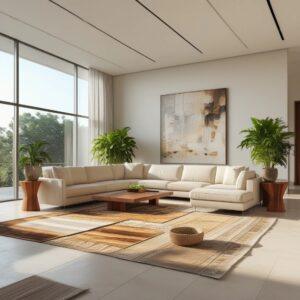
Kitchen — Beauty Meets Function
Kitchens must be durable and logical.
Workflow, Storage, and Surfaces
- Follow the kitchen work triangle: sink, stove, fridge.
- Prioritise durable countertops (quartz, granite, or high-quality laminate).
- Use pull-out drawers, vertical dividers, and under-sink organisers for smarter storage.
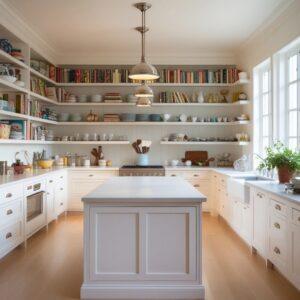
Bedroom — Comfort First
Bedrooms should feel like a hug at the end of the day.
Bed placement, textiles, and lighting
- Centre the bed on the main wall; use bedside lamps for task reading.
- Layer bedding (sheet, duvet, throw) and mix textures for cosiness.
- Consider blackout curtains and a soft rug beside the bed.
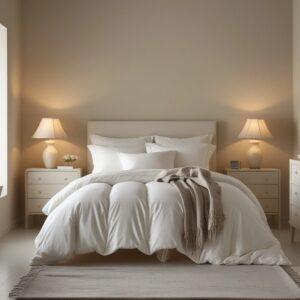
Bathroom — Small But Mighty
Small rooms need big decisions.
Fixtures, tiles, and ventilation
- Invest in good ventilation — it prevents mould and preserves finishes.
- Choose tiles that are slip-resistant for floors and statement tiles for a feature wall.
- Wall-mounted vanities free up floor space visually.
Home Office — Focused & Comfortable
Work-from-home setups need comfort + fewer distractions.
Ergonomics, storage, and background styling
- Desk at elbow height; monitor at eye level.
- Use vertical storage and cable management for a tidy background.
- Style the background for video calls: plants, art, or a simple bookshelf.
Small Space Strategies: Make Every Inch Count
Living small doesn’t mean living cramped. Use multifunctional furniture (sofa beds, storage ottomans), vertical storage (tall shelving), and light colours to open up space. Mirrors are an old trick because they reflect light and visually double your room.
Tip: Use scale-appropriate furniture — a slim-legged sofa reads lighter than a bulky one.
Lighting Strategies: Layer It Right
Three layers: ambient (overhead), task (reading, cooking), accent (art, architectural highlights). Use dimmers and smart bulbs to tune light temperature — warm for relaxing, cool for focus. Aim for multiple light sources in every room rather than relying on one ceiling fixture.
Pro tip: Match bulb temperature across a room to avoid a patchy look — all warm or all cool, depending on the mood.
Materials, Sustainability, and Durability
More people want sustainable choices. Opt for responsibly sourced wood, low-VOC paints, and durable fabrics (performance textiles) that resist stains. Reclaimed wood, recycled materials, and furniture from certified sustainable brands reduce environmental impact and often add character.
Durability beats trendiness for long-term value. Choose the best you can afford for high-use pieces — sofas, dining tables, and mattresses.
Budget-Friendly Hacks That Look Expensive
- Paint: A new colour instantly upgrades a space.
- Hardware swap: New handles and knobs on kitchens and cabinets refresh the look for little money.
- Statement lighting: One bold pendant can feel luxe.
- Thrift + revamp: Refinish or reupholster vintage finds.
- Rugs: A good rug anchors a space and adds warmth — even inexpensive ones can look great layered.
Common Mistakes to Avoid in House Interior Design
- Buying before measuring. Seriously—measure first.
- Ignoring scale: tiny furniture in a big room or vice versa.
- Overmatching: Rooms that are too “matchy” lack personality.
- Skimping on lighting: a beautiful room with poor lighting looks flat.
- Forgetting functionality: pretty doesn’t work if the drawer jams every time.
Final Checklist Before You Start Buying
- Measure doors, windows, and room dimensions.
- Create a moodboard and pick a 60/30/10 colour palette.
- Decide must-haves vs. nice-to-haves.
- Source at least three vendors/prices for big items.
- Plan lighting and electrical changes before ordering big furniture.
- Keep receipts and return windows — always.
Bringing Style and Function Together
At the end of the day, house interior design isn’t about following strict rules or copying a showroom—it’s about creating a space that feels like you. A stylish and functional home comes together when you balance colours, play with textures, and plan layouts that actually fit your lifestyle.
Think of it this way: your home is your canvas. Whether you love cosy minimalist design or bold, eclectic interiors, the choices you make should reflect the way you live every single day. Don’t be afraid to mix styles, try new ideas, or even break a “design rule” if it makes your home more comfortable.
The best interiors aren’t perfect—they’re personal. So start small, experiment with layouts, and let your personality shine through. Because a well-designed house doesn’t just look beautiful, it makes life inside it flow more smoothly too.
Frequently Asked Questions
Q1: How do I choose a colour scheme for my house interior design?
Start with a base neutral for large surfaces, pick a secondary colour for furniture, and add an accent colour for accessories. Use the 60/30/10 rule and create a moodboard to test combinations.
Q2: What’s the easiest way to make a small room feel larger?
Use light paint colours, mirrors, leggy furniture (which opens space under pieces), vertical storage, and consistent flooring to visually expand the space.
Q3: How much should I spend on a sofa or bed in my design budget?
Allocate roughly 40% of your furniture budget to the most-used pieces (sofa, bed). Quality and comfort here matter — they last longer and save money over time.
Q4: Can I mix modern and vintage styles in house interior design?
Absolutely. Mixing modern with vintage creates visual interest and prevents a space from feeling too staged. Balance is the key—pair clean-lined modern pieces with a few curated vintage finds.
Q5: Where should I place lighting controls and dimmers?
Install dimmers in living rooms, dining rooms, and master bedrooms. Place switches at typical heights near room entries and ensure task lighting has its own switch (desk lamps, vanity lights).

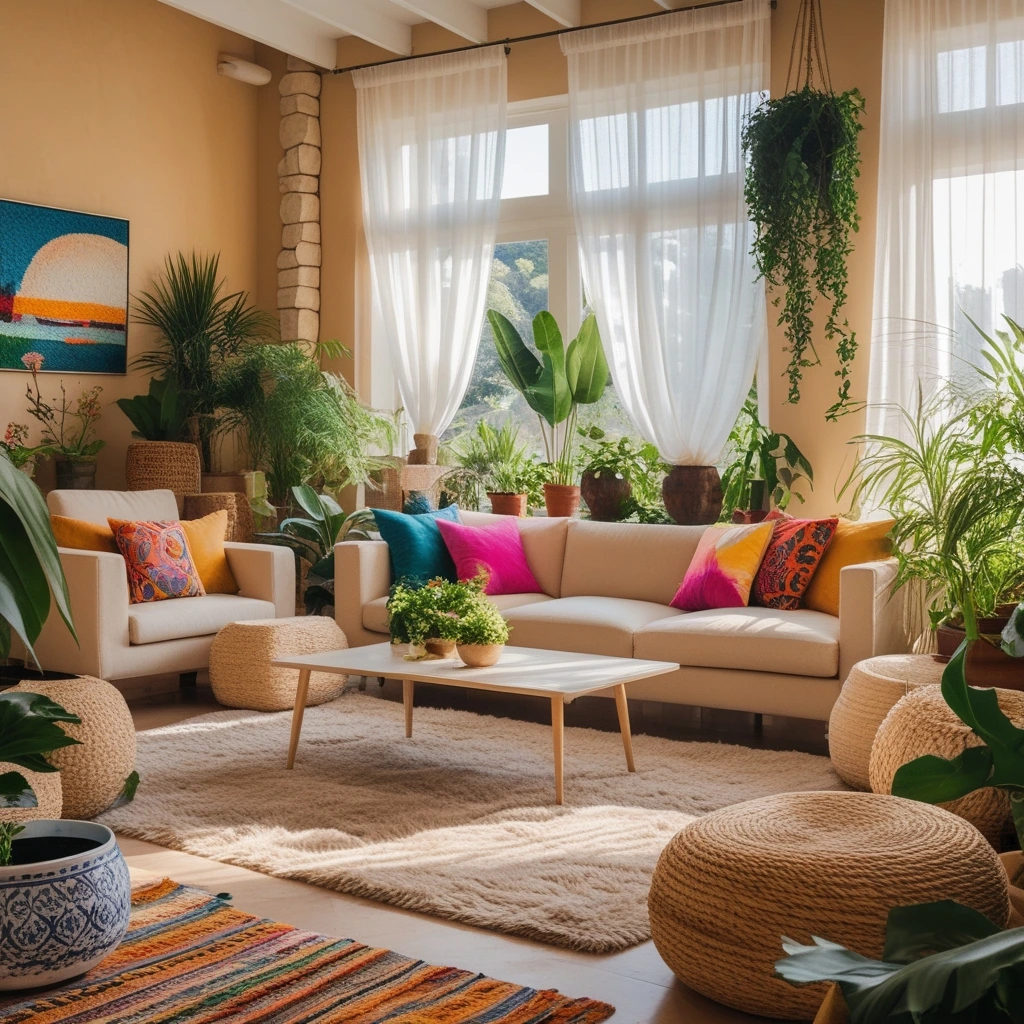
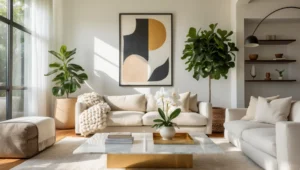
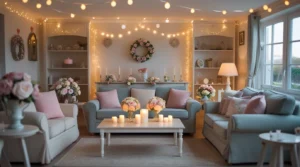

Discover your perfect shades with soft autumn color palette and find your unique color palette.
Moreover, evaluate the types of tools and technologies utilized by the service for the analysis.
Individual hue assessment has turned incredibly available with virtual applications and tests that help establish whether you’re a Spring, Summer, Earthy category, or Dramatic palette season. I not long ago utilized a color typing survey and found out I’m a Quiet Rich https://color-analysis-online.org, which demonstrated why earthy, gentle colors like heated chocolates and soft forest come across so much more flattering on me than striking, cool hues. The Dark Cool and Muted Light tone groups are uniquely eye-catching – Cool deep people can handle powerful differences and jewel tones, while Summers look stunning in soft, crisp pastels and deep pink colors. If you’re finding difficulty to discover complimentary shades or desire to organize your closet, I wholeheartedly suggest testing an online color palette analyzer or seeking for “local color consultation” to identify a area professional.